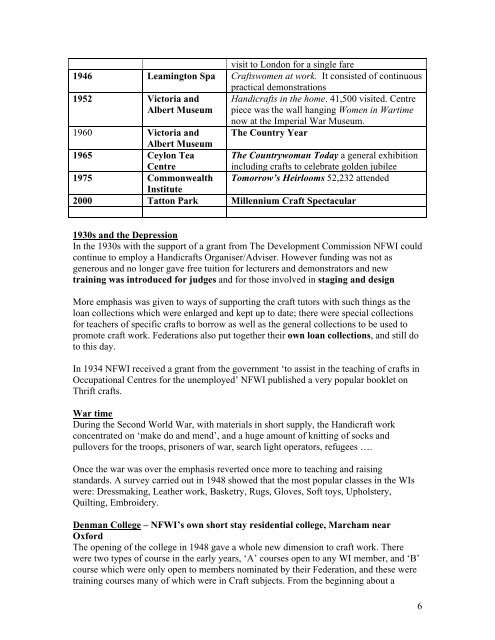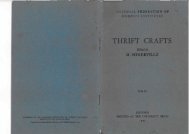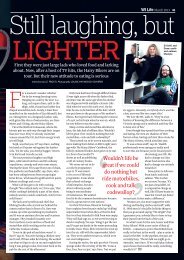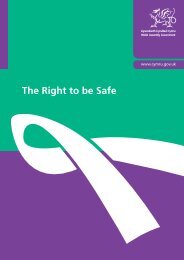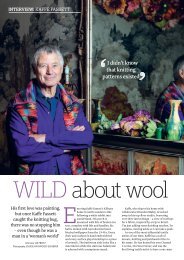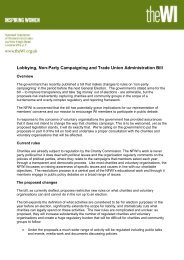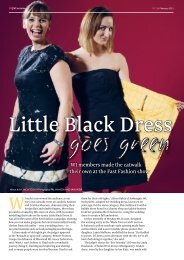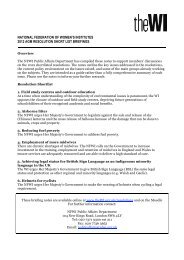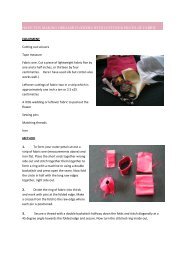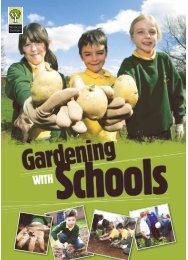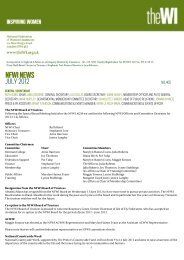Teaching and Preserving crafts - National Federation of Women's ...
Teaching and Preserving crafts - National Federation of Women's ...
Teaching and Preserving crafts - National Federation of Women's ...
You also want an ePaper? Increase the reach of your titles
YUMPU automatically turns print PDFs into web optimized ePapers that Google loves.
visit to London for a single fare<br />
1946 Leamington Spa Craftswomen at work. It consisted <strong>of</strong> continuous<br />
practical demonstrations<br />
1952 Victoria <strong>and</strong><br />
Albert Museum<br />
H<strong>and</strong>i<strong>crafts</strong> in the home. 41,500 visited. Centre<br />
piece was the wall hanging Women in Wartime<br />
now at the Imperial War Museum.<br />
1960 Victoria <strong>and</strong> The Country Year<br />
Albert Museum<br />
1965 Ceylon Tea<br />
Centre<br />
The Countrywoman Today a general exhibition<br />
including <strong>crafts</strong> to celebrate golden jubilee<br />
1975 Commonwealth Tomorrow’s Heirlooms 52,232 attended<br />
Institute<br />
2000 Tatton Park Millennium Craft Spectacular<br />
1930s <strong>and</strong> the Depression<br />
In the 1930s with the support <strong>of</strong> a grant from The Development Commission NFWI could<br />
continue to employ a H<strong>and</strong>i<strong>crafts</strong> Organiser/Adviser. However funding was not as<br />
generous <strong>and</strong> no longer gave free tuition for lecturers <strong>and</strong> demonstrators <strong>and</strong> new<br />
training was introduced for judges <strong>and</strong> for those involved in staging <strong>and</strong> design<br />
More emphasis was given to ways <strong>of</strong> supporting the craft tutors with such things as the<br />
loan collections which were enlarged <strong>and</strong> kept up to date; there were special collections<br />
for teachers <strong>of</strong> specific <strong>crafts</strong> to borrow as well as the general collections to be used to<br />
promote craft work. <strong>Federation</strong>s also put together their own loan collections, <strong>and</strong> still do<br />
to this day.<br />
In 1934 NFWI received a grant from the government ‘to assist in the teaching <strong>of</strong> <strong>crafts</strong> in<br />
Occupational Centres for the unemployed’ NFWI published a very popular booklet on<br />
Thrift <strong>crafts</strong>.<br />
War time<br />
During the Second World War, with materials in short supply, the H<strong>and</strong>icraft work<br />
concentrated on ‘make do <strong>and</strong> mend’, <strong>and</strong> a huge amount <strong>of</strong> knitting <strong>of</strong> socks <strong>and</strong><br />
pullovers for the troops, prisoners <strong>of</strong> war, search light operators, refugees ….<br />
Once the war was over the emphasis reverted once more to teaching <strong>and</strong> raising<br />
st<strong>and</strong>ards. A survey carried out in 1948 showed that the most popular classes in the WIs<br />
were: Dressmaking, Leather work, Basketry, Rugs, Gloves, S<strong>of</strong>t toys, Upholstery,<br />
Quilting, Embroidery.<br />
Denman College – NFWI’s own short stay residential college, Marcham near<br />
Oxford<br />
The opening <strong>of</strong> the college in 1948 gave a whole new dimension to craft work. There<br />
were two types <strong>of</strong> course in the early years, ‘A’ courses open to any WI member, <strong>and</strong> ‘B’<br />
course which were only open to members nominated by their <strong>Federation</strong>, <strong>and</strong> these were<br />
training courses many <strong>of</strong> which were in Craft subjects. From the beginning about a<br />
6


